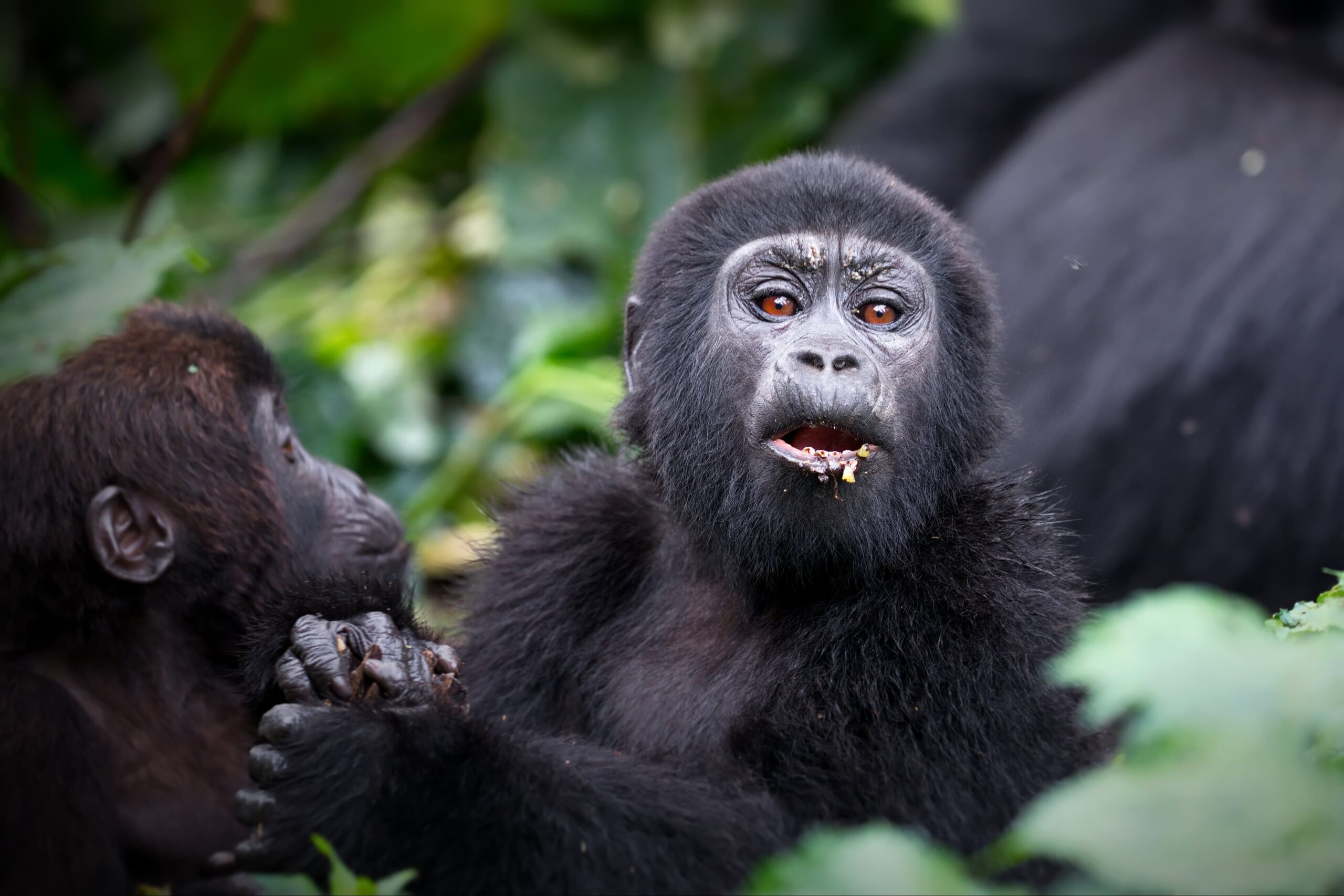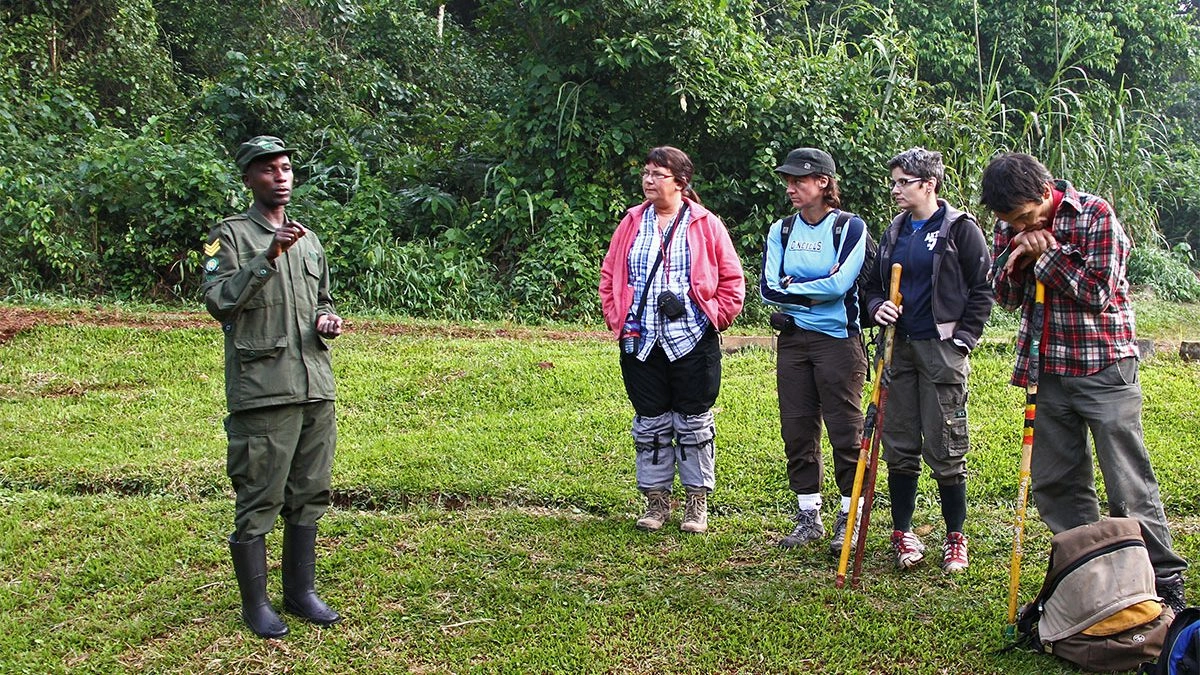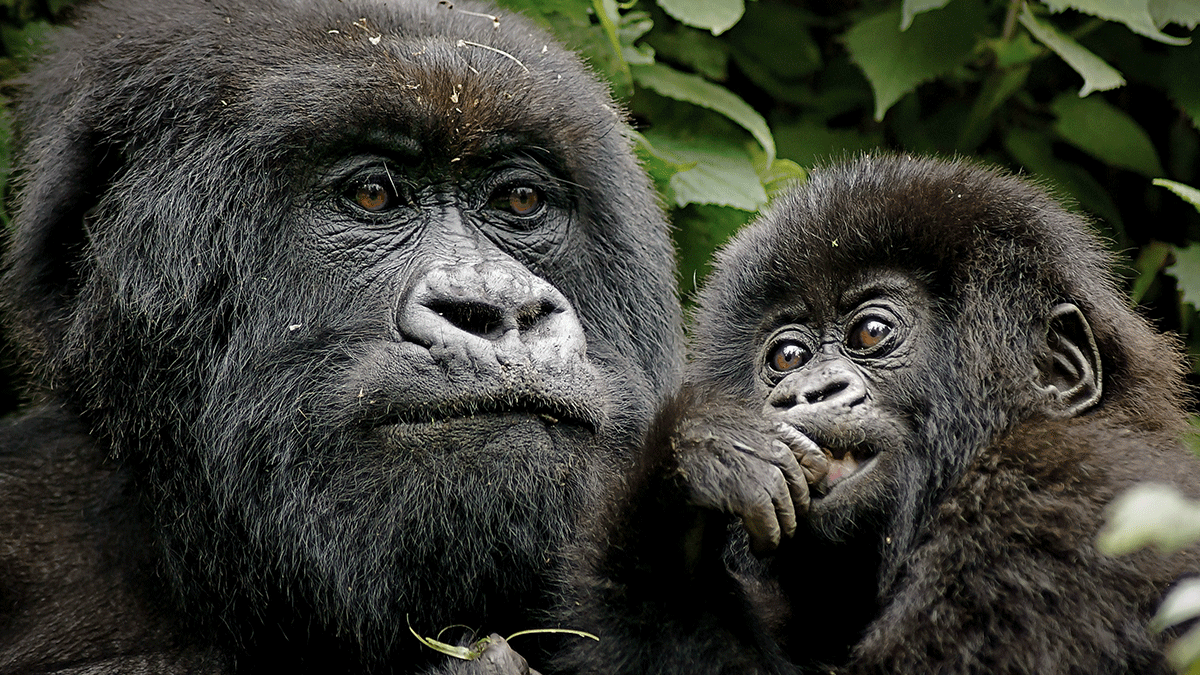The time or duration of gorilla trekking is one of the most frequently asked questions by tourists planning to visit these magnificent beasts. The experience has a clear start and end, but the hours in between can shift considerably. That variation is what makes the subject worth examining in detail.
The Rwanda Development Board organises and monitors every trek under a structured permit system, yet no schedule is entirely fixed. This means the duration is best understood through observation and consistent field records, rather than relying solely on averages.
This article will focus on the practical reality of trekking times, using what happens in Rwanda’s Volcanoes National Park as the benchmark. By the end, you will know exactly how to plan your day, confident that the timing is based on grounded, in-country experience rather than broad generalisations.
Understanding the Trekking Process in Rwanda
1. Arrival at Volcanoes National Park Headquarters
All treks begin at the park headquarters in Kinigi, Musanze District. Visitors are required to arrive by 7:00 AM for registration. This site functions as the operational hub, where park wardens, guides, and trackers coordinate activities for the day. The early gathering allows staff to finalise group assignments once the latest gorilla locations are confirmed.
2. Group Formation and Allocation
Trekkers are organised into groups of up to eight, in line with Rwanda Development Board regulations. Each group is assigned to one habituated gorilla family. Assignments consider fitness levels, interest in specific families, and sometimes language preferences. Guides work closely with trackers already in the forest to ensure each group is matched appropriately.
3. Pre-Trek Briefing
Once groups are confirmed, a guide delivers a briefing lasting about 20 minutes. Topics include trekking etiquette, gorilla behaviour, distance rules, photography guidelines, and safety measures. The briefing also covers environmental considerations, such as staying on marked paths to prevent habitat disturbance. This stage is critical, as every group must comply with the same conservation protocols.
4. Transfer to the Trailhead
After the briefing, groups board vehicles for the drive to their allocated starting point. The drive can be as short as 20 minutes or extend beyond an hour, depending on the gorilla family’s location. Trailheads are positioned along the park boundary, often adjacent to farmland, and serve as the official entry into the protected forest.
5. Trek into the Park
The trek begins at the trailhead under the leadership of experienced guides, supported by armed rangers for protection and porters for assistance. The path often passes through cultivated fields before reaching the park’s afro-montane forest zone. Entry involves crossing a stone boundary wall designed to keep wildlife within the park’s limits. Once inside, trekkers follow established routes, though vegetation density and footing conditions can vary significantly depending on recent rainfall.
6. Locating the Gorilla Family
Trackers, who have been in the forest since dawn, relay information via radio about the gorillas’ position. Guides adjust the route based on these updates, which may require ascending steep slopes or navigating through bamboo stands. This stage continues until the group reaches the visual range of the assigned family.
7. Gorilla Viewing Period
The viewing period is strictly regulated to sixty minutes, counted from the moment the group first approaches the gorillas at a safe distance. Guides manage positioning for photography and observation while ensuring the gorillas’ comfort and safety. The hour allows for observation of natural behaviours such as feeding, grooming, and movement within their range.
8. Return from the Forest
After the viewing period, trekkers retrace their route to the trailhead. The pace is generally faster on the return, although muddy or steep conditions can still slow progress. The group then boards vehicles for the drive back to the park headquarters.
9. Post-Trek Debrief and Certificates
On arrival at Kinigi, the guide conducts a short debrief, answering questions and reviewing notable moments from the trek. Park staff issue trekking certificates as an official record of participation. Many visitors choose to have lunch in nearby Musanze or at their lodge before continuing with their day.
READ ALSO: Understanding the $1,500 cost of Gorilla Trekking in Rwanda
Factors Affecting the Duration of Gorilla Trekking Duration
Operational Factors
a. Gorilla Group Allocation
The specific gorilla family assigned to a group has a major influence on the duration of gorilla trekking. Some families maintain ranges close to trailheads, while others roam deeper into the park’s Afro-montane forest. Allocation decisions are made by park authorities each morning based on tracker reports, group fitness, and permit logistics.
b. Trailhead Access
The time taken to reach the starting point varies. Certain trailheads are accessible in under 30 minutes from Kinigi, while others require over an hour of vehicle travel. This initial transfer lengthens or shortens the overall day.
Environmental Factors
a. Weather Conditions
Rainfall, particularly between March and May or from September to November, affects trekking time. Wet ground slows movement, increases the need for rest stops, and can make certain paths less direct. Even in the dry season, early morning mist can delay visibility-based decisions.
b. Vegetation Density
Growth rates in bamboo zones and afro-montane forests change with the seasons. Thicker vegetation requires slower movement and more frequent clearing by guides or porters.
Human Factors
a. Group Pace
The speed of a trekking group is set by its slowest member. Guides monitor everyone’s condition and adjust rest frequency accordingly. While this keeps the group together, it also affects the total time spent on the trail.
b. Photography and Observation Habits
While the viewing period itself is fixed at 60 minutes, pauses for photography during the approach or return can extend movement times. Guides balance the need for efficiency with visitor expectations for documentation.
Wildlife Movement
a. Gorilla Mobility
Gorillas move daily within their home ranges, sometimes covering significant distances between the trackers’ first sighting and the group’s arrival. Trackers remain ahead of visitors to monitor this movement and redirect routes when necessary.
b. Other Wildlife Encounters
Occasionally, the presence of other large mammals or active hornbill flocks prompts the guides to adjust the path for safety or observation. These diversions, while not common, add to the overall time.
Average Breakdown of the duration of Gorilla Trekking
The following times reflect field records from Volcanoes National Park operations and are intended as a planning guide. Actual durations can vary daily.
| Stage | Minimum Duration | Maximum Duration |
| Arrival and registration at Kinigi | 30 minutes | 45 minutes |
| Pre-trek briefing | 20 minutes | 30 minutes |
| Drive to the trailhead | 20 minutes | 90 minutes |
| Hike to gorillas | 60 minutes | 240 minutes |
| Gorilla viewing | 60 minutes | 60 minutes |
| Return hike | 45 minutes | 180 minutes |
| Return drive to headquarters | 20 minutes | 90 minutes |
| Post-trek debrief and certificate | 10 minutes | 20 minutes |
In most cases, the full activity takes between four and eight hours from the morning briefing to the return to Kinigi headquarters. While some treks finish by late morning, others extend well into early afternoon. It is advisable to keep the rest of the day’s schedule flexible.
How to Prepare for the Trek’s Duration
- Train in advance – Light cardio and walking on uneven inclines improve stamina at altitudes between 2,400 and 3,000 metres.
- Choose proper footwear – Sturdy hiking boots with ankle support help on steep or slippery ground.
- Dress for changing conditions – Waterproof trousers, a lightweight rain jacket, and gloves for stinging nettle protection.
- Hydrate well – Carry at least two litres of water in a reusable bottle or hydration pack.
- Pack energy food – Nuts, dried fruit, or energy bars for sustained energy on extended hikes.
- Prepare mentally – Expect variable trekking times and remain patient; the gorilla viewing hour remains constant.
- Organise your daypack – Include sunscreen, insect repellent, spare memory card, small first-aid kit, and keep weight manageable.
READ ALSO: What to pack for a gorilla trek
Staying within reach of Volcanoes National Park headquarters in Kinigi or Musanze reduces travel stress on the morning of your trek. Early arrival is essential for registration, and nearby lodges allow a more relaxed start without lengthy pre-dawn drives.
When planning other activities on the same day, keep schedules flexible. Gorilla trekking can finish by late morning or extend into the early afternoon, depending on the gorilla family’s location and hiking conditions. Activities that require fixed departure times, such as intercity transfers, are best scheduled for the following day.
Private transport offers more control over post-trek logistics. Vehicles can remain on standby at the trailhead to ensure a prompt return once the group exits the forest. If relying on arranged lodge transport, confirm pick-up times in advance to avoid unnecessary waiting.
Finally, prepare for variable conditions. Even during Rwanda’s drier months, the afro-montane environment can produce rapid weather changes. Pack for both sun and rain, and maintain enough water and snacks to sustain you if the trek runs longer than expected. These adjustments may seem minor, but they often determine whether your day runs smoothly.
Conclusion
The timing of a gorilla trek in Rwanda shifts with the movement of the gorillas, the conditions of the forest, and the pace of the group. These variables create a dynamic experience that cannot be reduced to a single standard duration.
By approaching the trek with flexibility and informed expectations, you give yourself space to appreciate the process as much as the destination. The hours in the forest, whether few or many, remain part of the same extraordinary day.



